This is the problematic two measures I mentioned in yesterday’s post. It’s from Fauré’s Theme and Variations, opus 73, variation six. I promised my student I would try to make a cleaner version to help him work on these relatively simple cross rhythms in a complex context. Here’s what I came up with:
The notes are lined up automatically in Finale. I enjoy doing this kind of thing and did have time to get it done before we left for our little adventure yesterday.
I enjoyed the chance to chat with Rhonda on the drive down to South Bend. Eileen sat in the back and patiently did Soduko and navigated while Rhonda and I talked shop in the front.
Having a colleague around (again) is such a pleasure. She also was a valuable asset in my understanding of the instruments we played yesterday. Rhonda is in love with and has an expertise in the kind of organ building (German, north and south, 17th-18th century) the two organs were examples of.
Thus she could help me register them quickly so I could hear the sounds in clear ways. It was also invaluable to listen to listen to her play from a distance and get a better idea of the organs actually sounded.
But first I listened to different ranks separately and carefully.
The Fritts at Notre Dame is a historical reconstruction of the kind of organ Buxtehude played in Northern German. Rhonda spent several years in this area, studying and playing the organs that are still there.
I found the different ranks unified in their sound. In other words all the principals were very much the same whether they were pitched at the written sound or one or two octaves about the written sound.

I mention this because I was charmed by the way the Taylor and Boody (above) managed to create unique character in different ranks even though they were of the same family (i.e. principles or flutes). The Taylor and Boody at Goshen represents a different historical reconstruction according to Rhonda. It’s an example of a more southern German sound which I found warmer and quite attractive.
Of course a great deal of an organ’s sound and over all subjective feel and experience is the room (concert hall or church) in which it resides. The Notre Dame room is a bit more formal feeling to me. The reverberation was correct and lengthy. But the overall architecture in the room felt pretty formal in a very university way (appropriate enough).

The Goshen room was much different. As you can see above, chairs instead of pew-like benches (this view I found on the web is looking out from the organ area).It wasn’t exactly less formal but instead of the white bright surfaces of the Notre Dame hall, the walls were some sort of cement or stone block and just seemed more friendly. It also helped that there windows in the Goshen room (as Rhonda pointed out).
This is my phone pic of the Taylor and Boody console.
A little added bonus at Notre Dame was an actual historical instrument made in Italy around 1750 and beautifully restored by the organ building Martin Pasi.
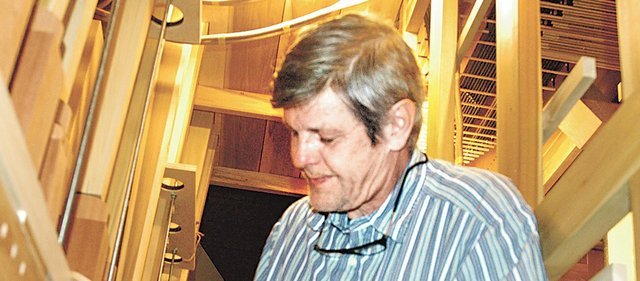
It faces into the room directly opposite the Fritts.
It had a beautiful gentle sound.
The music rack was simply hooked onto the rim below the pipes. It was totally movable.
Playing these wonderful instruments helped me remember that I am an organist. I miss playing good instruments. But not seriously enough to be discontent in my present gig.
I couldn’t resist a little phone pic of the beautiful scroll work on this instrument.
It was a day well spent and very satisfying.

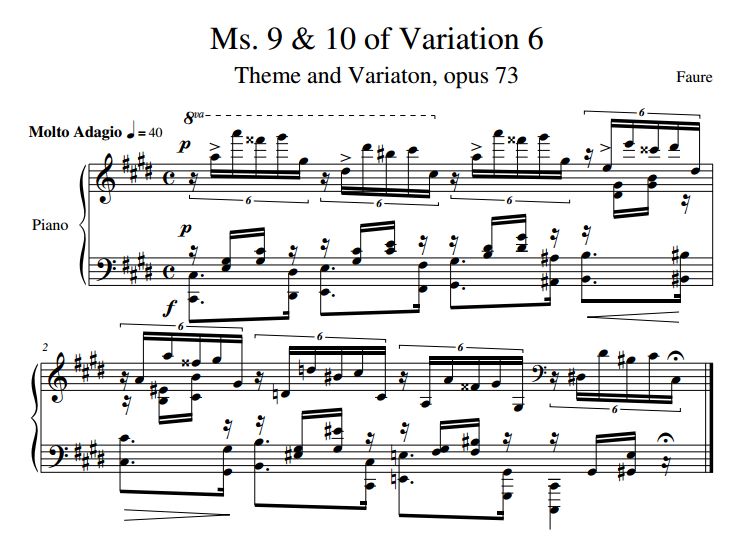
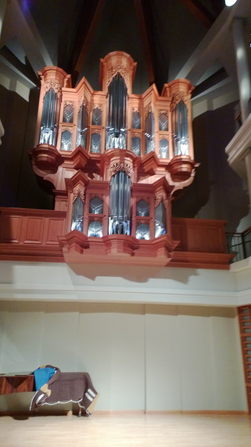
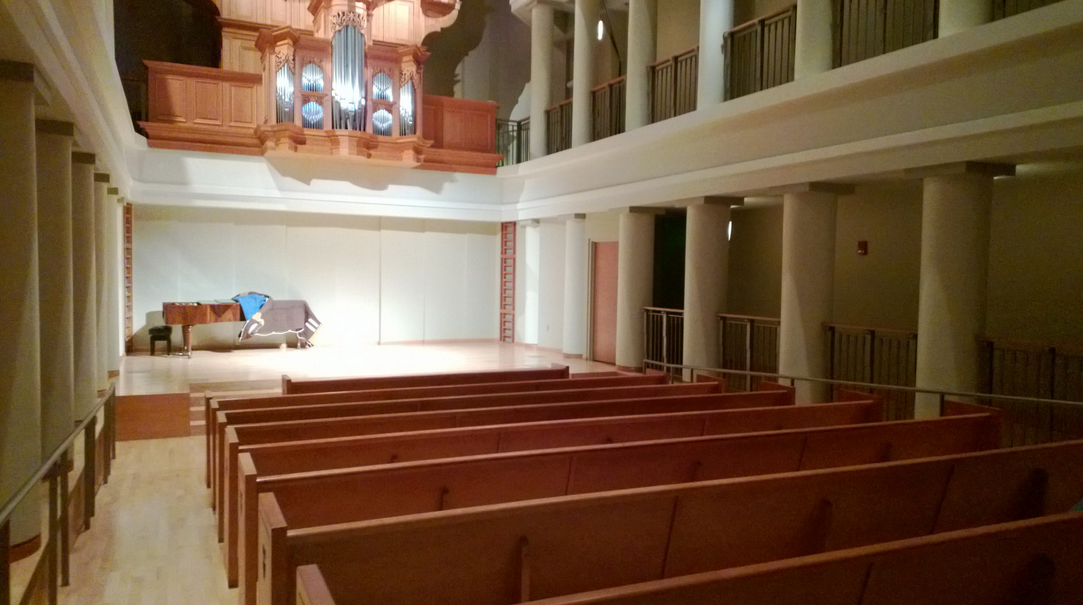
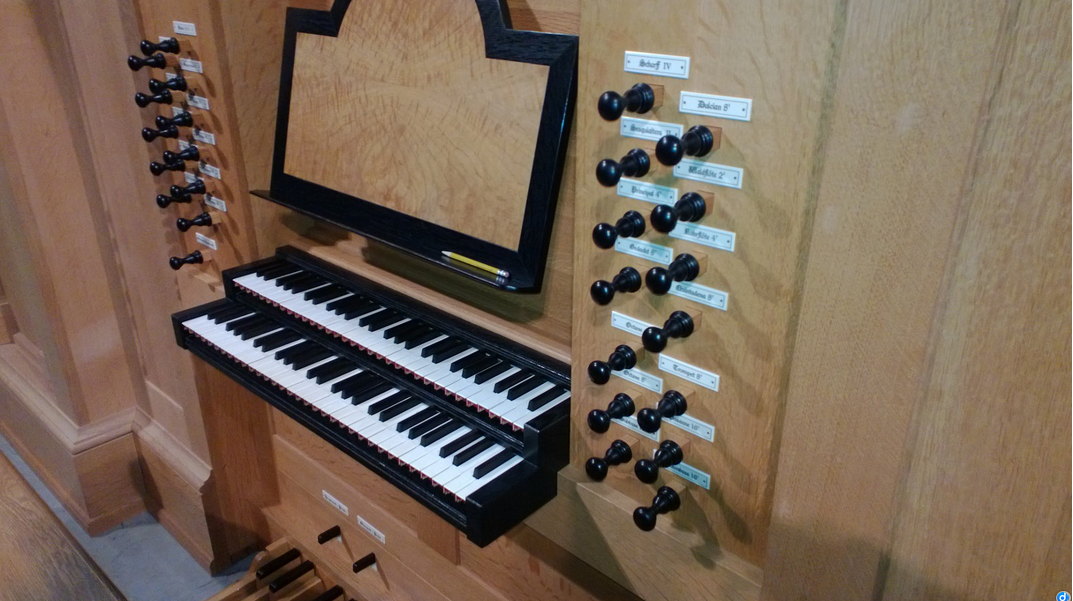
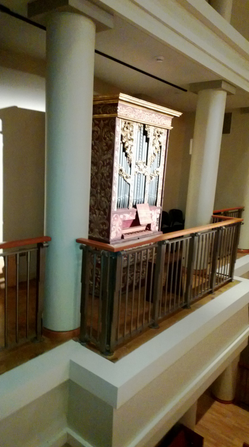
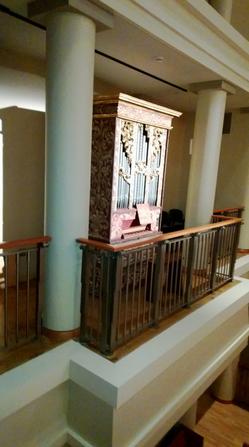
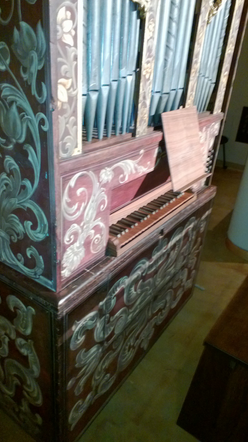
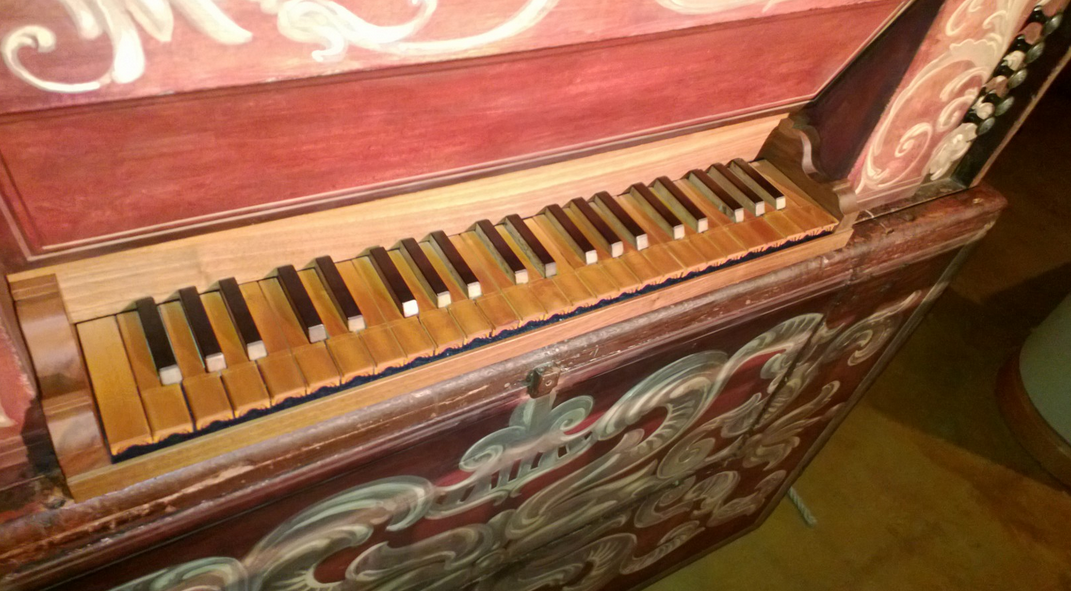
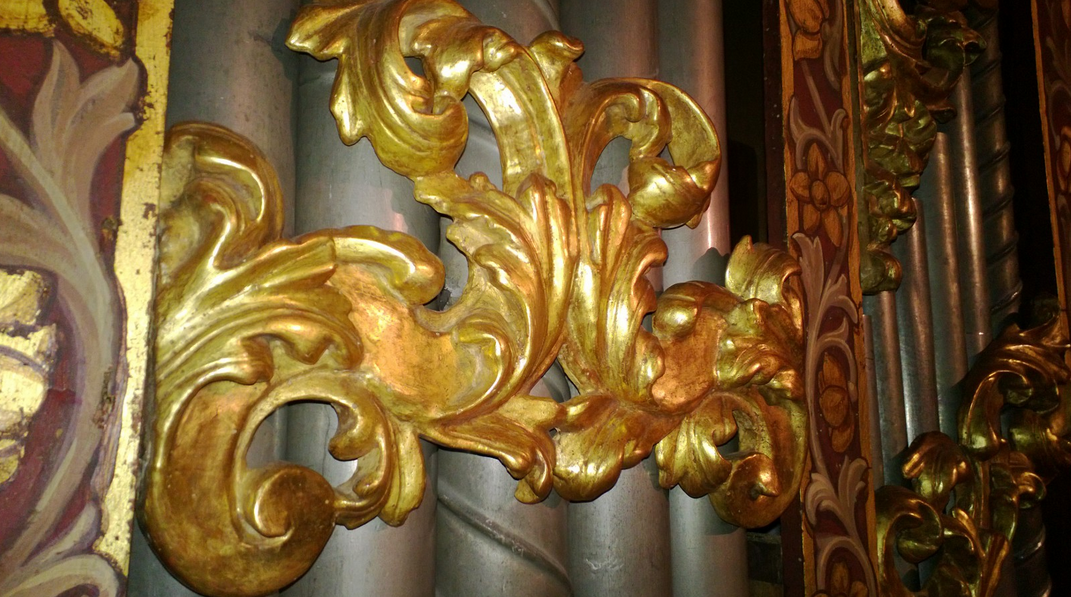
It occurrs to me now that it’s probably CENTRAL German in style, the T&B, and not Southern. Not that anyone but me cares, but still, no point in not being correct about this kind of stuff, when I’m being quoted as the authority! I’m pretty sure it’s somewhat modeled on the Silbermann style (who was central German).
That makes sense and I think you may not have actually said Southern Germany. I may have sort of made that up. heh.
Was at a diocesan training session today for Safe Church trainers. I was asked to do this and, since I bitched about how bad the old training was, I figured I had to say yes. At any rate, one of the other attendees is a Roman Catholic, married to an Episcopal priest, who sang in Gale’s choir when she was a student at ND. A friend of lots of ND organ grads. She enjoyed hearing about your trip to visit Craig’s new organ. Looks like a fun way to spend a Friday.
Yep. It was a bit traumatic to be back at Notre Dame. It has changed a lot. For instance, the building where the organ is housed is all new and sits where there was once a field between the college and a road. But it was memories that troubled me. But just a little. Rhonda was very helpful because German organ building is one of her passions.